Help From the Heart
Caring for Those With Dementia, and the Caregivers Too

AS A TEAM
PCMS CONTINUES TO BUILD OUT UNIFIED SPORTS PROGRAM
Spreading Awareness
Local Couple Works to Inform Others of an Often Overlooked Danger





























Caring for Those With Dementia, and the Caregivers Too

PCMS CONTINUES TO BUILD OUT UNIFIED SPORTS PROGRAM
Local Couple Works to Inform Others of an Often Overlooked Danger




























Six years ago, Jennifer Coy-Rash was busy raising her two young children when she began noticing that her mother could no longer find her way to her house or to the local library. She observed other odd behavior, too, so she had her 64-year-old mom evaluated, and she was diagnosed with early-onset Alzheimer’s. A couple years later, Coy-Rash’s dad received the same diagnosis.
While Alzheimer’s disease is the most common type of dementia, accounting for 60 to 80% of cases, other types include dementia with Lewy bodies, frontotemporal, and vascular.
When we think of the word “dementia,” we tend to think of memory loss, but it’s actually much more than that. According to Jessie Hillock, owner and founder of The Memory Compass, dementia is a loss of executive function.
“We’re doing a disservice by thinking of dementia as memory loss,” says Hillock, a dementia care specialist. “A person may be
able to name the day of the week and the president of the United States, but they can’t operate their cell phone or their microwave oven.”
It’s important to recognize the difference between normal aging and mild cognitive impairment. With normal aging, you may see changes in one’s ability to multitask, slowed thinking speed, occasionally struggling to find the right word, and sometimes forgetting names and appointments but remembering them later. Also with normal aging, the individual experiencing these issues is the only one who notices them. Mild cognitive impairment, however, is when others take notice. In this instance, an individual’s memory loss disrupts life. They experience confusion with time or place, they misplace things and are unable to retrace steps, and they may struggle with understanding visual images and spatial relationships, which can result in car accidents. Also, dementia patients lose their filter.
When communicating with someone with dementia, Hillock recommends joining the person in their reality, rather than trying to invite them into yours. For example, say your mother passed away five years ago and your father, who has dementia, asks you where his wife is. Rather than reminding him that she’s been deceased for years, it’s better to say, “I think she’s at the store right now,” or, “What would you like to tell her?”
Some people think taking their loved one to the gravesite will help them grasp reality, but that news just serves to confuse and overwhelm them.
Another common scenario with dementia patients is realizing that it’s best, for the well-being of all concerned, to take their car keys away. In this instance, what do you do if they keep asking for their keys? Rather than stating that it’s no longer safe for them to drive, it’s better to say, “I took your car to the shop,” or, “Your grandson needed to borrow your car.”
“This one is great because if they feel they are helping someone, that makes them feel useful,” says Hillock, who calls these little white lies “therapeutic fiblets.”
Karen Rogers (name changed to protect identity) says that providing her husband with a fake set of keys keeps him happy.
“Holding those keys makes him feel independent,” says Rogers.
One common complaint from families of dementia patients is their refusal to eat or drink. Asking them if they’re hungry or thirsty will likely be met with an upturned nose. If, however, you hand them a plate of food or a glass of water, they’ll often eat or drink it.
“Lead them to food and sit down with them,” says Hillock.
Helping dementia patients find purpose is key. Hillock knows of a lady who leaves the same basketful of laundry for her mother to fold over and over, because her mom wants to feel like she’s helping. You may have heard of dementia patients who are given a baby doll or a stuffed animal to “care for.” While this works beautifully in some cases, Hillock points out that it can be anxietyprovoking for others if they are concerned that someone has abandoned their baby or their pet.
In 2021, 11 million Americans reported providing 16 billion hours of unpaid care for loved ones with dementia. Furthermore, the Central Indiana Council on Aging reports that one in six millennial caregivers who cares for someone living with dementia struggles with mental, physical and financial hardships because of their caregiving role. Therefore, it’s important that we acknowledge the importance of caring for the caregiver as well.
Jean Crane, a counselor at Care to Change, says this entails meeting physical, mental, emotional and social needs. This includes eating nutritious foods, engaging in proper exercise and getting adequate rest. It’s also crucial for a caregiver to cut out negative self-talk.
“Be less judgmental and more compassionate to yourself,” says Crane.

Also, curtail your “what-if” thinking, which only stirs anxiety. It’s better to focus on today, in the given moment.
It’s also wise to practice self-gratitude. “It’s impossible to be anxious and grateful at the same time,” says Crane.
Emotionally, you should identify, express and process your feelings. In other words,

if you’re stressed, breathe. If you’re angry, punch a pillow. If you’re disappointed, confide in a trusted friend. Also, tend to your soul needs.
“What brings you rejuvenation?” asks Crane. “What fills your tank? You can’t give if you have nothing left inside.”
A dementia diagnosis can be a scary thing,

but keep in mind that there are resources available to help you.
“We’re never taught how to be a caregiver,” says Marina Keers, executive director of Hendricks County Senior Services (HCSS). “We’re thrown into the role and we learn as we go.”
Coy-Rash ended up connecting with a lot of great resources, many through HCSS, that helped her navigate this new life with her parents. She now is well-versed in Medicaid waiver payments including eligibility criteria, finding providers, and the services covered.
“Connecting with the proper resources is so helpful,” says CoyRash, who now serves on the HCSS board.
HCSS offers an Alzheimer’s support group and an Improve Your Mood support group, in addition to activities, programs and other resources. They also periodically offer an educational 90-minute Dementia Friends Workshop, which arms family and friends of dementia patients with helpful information. Visit hcseniors.org to learn more.
• Be patient when their memory fails by letting them try again, and reminding them of what they were talking about.
• Make your conversations meaningful, rather than just engaging in small talk. When you enter into “their world,” they may have a lot to say, but let them guide the conversation, rather than asking them, “Remember when?”
• Avoid letting them read thrillers or watch crime shows before bedtime because they may wake up thinking they are part of the scene. Stick with lighthearted books and shows in the evenings.
• If they are struggling to find the correct word, ask them to point to an object or gesture in order to communicate.
• Avoid towering over them so they don’t feel intimidated. Bend down to meet them at eye level.
• Speak slowly and clearly, and wait patiently for a response, as it may take 20 or more seconds for them to process what you said.














Colorectal cancer is no match against Franciscan Health’s nationally accredited cancer programs, board-certified oncologists and dedicated fellowship-trained colorectal surgeons. Our multidisciplinary team works around the clock to offer prompt diagnoses, advanced treatment options and the latest clinical trials to fight and beat colorectal cancer.
Schedule an Appointment OR Second Opinion today!
FranciscanHealth.org/ColonCancerCare

The Hendricks County 4-H Fairgrounds is preparing to welcome more than 150 youths to the Indiana Junior Rodeo Association (IJRA) and National Little Britches Association event this spring.
“The IJRA has been around for 35 years, and in 2018 we moved to the Hendricks County 4-H Fairgrounds as our permanent facility,” said Andreah Caldwell, treasurer for the IJRA. “When we moved there we had about 60 kids participating, and today our rodeos host between 130 and 180 kids. They’re coming from all over the state and surrounding areas, and we’re really excited to have this centrally located facility.”
Children as young as 4 years old can get their start at the rodeo competition with categories like dummy roping, barrels, goat untie and others.

As they practice and learn more, their skill levels increase, and the difficulty does too.
Ages 5 to 8 add goat tie and calf riding to their repertoire. There’s a junior division for girls aged 9 through 13, and another for boys. The oldest in the junior rodeo are separate girl and boy divisions, aged 14 to 18, and they move into bull riding, saddle
bronc riding and team roping, to name a few.
“The ratio is about 60% girls at the moment,” Andreah said. “That’s because there are a ton of barrel racers throughout all age groups, but when you get into calf ropers, for instance, there might be only eight of them.”

Do you have health questions or symptoms that have been weighing on your mind? Gabe Woodruff, NP, with St. Vincent, has returned to his hometown of Brownsburg and has new patient appointments available. Start a conversation with him about checkups, screenings, new symptoms or chronic conditions, today. Start a conversation with a provider today
Aaron ‘Gabe’ Woodruff, NP Family Medicine

Breakaway roping has become more popular over the years, just recently added in Professional Rodeo Cowboys Association events, and soon the National Finals Rodeo events.
Primarily a women’s competition, breakaway roping involves riding horseback while roping a calf. The rope breaks away from the saddle once the calf gets far enough away from the horse.
As more events like this are accepted in the professional arena, the more opportunities young people have to compete in the future. That’s important to women like Kennedy Hayes, who participated in her first rodeo in preschool.
“I compete in senior girls breakaway roping, barrel racing, goat tying and pole bending,” Hayes said. “I’d say I practice breakaway the most. Throughout the summer I spend four to five hours a day practicing and exercising my horses. During the school year it’s probably two to three hours a night.”
While sitting in the audience and watching participants ride a wild horse or bull, the

For those in the arena, it may be a lot of work but it’s also a lot of fun.
“I think every little boy or girl dreams of being a cowboy,” Andreah said. “We’ve all watched the westerns. It’s something we want to be a part of and it’s kind of fascinating.”
Creek Caldwell, Andreah’s son, has been participating for 12 years.
“It’s just what I love to do,” Creek said. “I like saddle bronc riding. You come out on a horse that’s not broke. It’s just like riding a bull. You have to stay on for eight seconds. There’s also a lot of scholarships available and I’ve been getting calls from colleges with rodeo programs.”
amount of work the young people put in might not be evident, but it’s an entirely different lifestyle from those who are not involved.
“It’s a family-oriented association,” Andreah said. “We call it our rodeo family because we’re sleeping in campers next to each other two weekends out of the month sometimes. It allows us to be very close and connected. These kids are often matured beyond their years. They are around adults all the time. My kids’ best friends are at the rodeo and I think many of them can say that.”
In addition to the practice and the friendships, the lessons learned truly develop the youth in a unique way. They learn independence, commitment, hard work and discipline.
“If you don’t put in the hard work, the outcome won’t be what you want,” Hayes said. “I think there’s a toughness that you learn. When it’s negative 5 degrees this winter, you still have to go out and feed your horses. Every day you’re going to feed, clean the barn and put in your practice time.”
The IJRA is a nonprofit and depends solely on sponsorships to help pay for award packages. In addition, participants solicit a minimum of $100 to be eligible for the awards.
“Last year we were able to provide about $30,000 in prize money, and another $30,000 in awards like saddles, buckles and tack,” Andreah said. “We depend on our

sponsors for all of that.”
Not only does the program move youth to participate in public speaking while sharing their passion with others, but it also fosters leadership skills.
“We have a student board,” Andreah said. “They help plan activities for the younger kids. It takes a lot of hard work and determination to be successful.”
Hayes said she too is looking at colleges with rodeo programs.
Both teens have obtained their ProRodeo card, allowing them to compete at other competitions against adults with more experience.
“I think it’s the adrenaline and the excitement, but it’s also seeing the outcome of the hard work I’ve put in,” Hayes said. “You see all the little kids looking up to you and that makes it worth it. You’re looking up to your own people - your parents, other
competitors with more experience - and the younger ones are looking up to you.”
Like many other sports, there is a level of danger and risk of injury, but with practice and experience, the risk decreases.
“There are concerns,” Andreah said. “We have many rodeos where no one gets hurt, but on occasion there’s a broken arm. I feel like it’s similar to football or baseball.”
Also similar to other sports, the love of rodeo is often passed down from generation to generation. Parents who rodeoed professionally have led their young ones to get their start.
It’s an atmosphere and bonding experience many of the youth appreciate.
“My dad was into rodeo and he and I practice together, and my mom is very



involved,” Hayes said. “She’s into the health and nutrition part. She makes sure the horses are healthy. There’s a lot of family time when you’re traveling all summer long; you’re in the truck for hours at a time together.”
The IJRA season begins in August each year, with rodeo competitions nearly every month throughout the school year. Many of those competitions, including the annual awards banquet, are held at the Hendricks County 4-H Fairgrounds.
“The partnership we have with the Hendricks County Fairgrounds and the awesome facilities they offer is a part of our growth and success,” Andreah said. “We’re really grateful to [Executive Director] Steve Patterson and the staff. They’ve been awesome to work with.”
For more information on the IJRA, visit indianajuniorrodeoassociation.org.

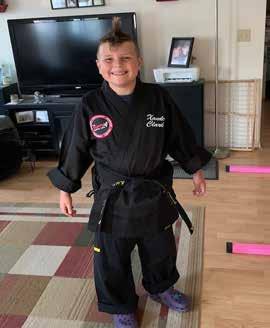





WILL SEXTON IS ENJOYING HIS ROLE AT IU HEALTH WEST AMID AN IMPRESSIVE MILITARY CAREER
Writer / Charlotte Stefanski
Photography Provided
Will Sexton has always been drawn to the human body - how it works and the science behind it.
“Sports and human movement were always interesting to me,” he said. “It just made sense to me.”
When he enrolled at Indiana University he studied kinesiology, the science of movement, and exercise science for his undergraduate degree, then pursued his master’s degree in exercise physiology.
But those weren’t his only interests. Sexton had always wanted to enlist in the military.
“I had always wanted to but my mother was always afraid of it, so she tried to talk me out of it,” Sexton explained. “But I still had that itch.”
He officially joined the United States Army in 2003, and for the next 13 years, 10
months and 25 days (not that he counted), he was on active duty. After that stint, his family of five decided it was time to settle down somewhere. First, Sexton took an assistant director of imaging position at Texas Children’s Hospital. Four years later he moved back to Indiana, and joined Terre Haute Regional Hospital as director of imaging services and special diagnostics. His family lived in Avon because his wife was a teacher in Zionsville, and IU Health West Hospital seemed like the perfect fit for him.
“I was like, ‘I’d love to get an opportunity there,’ and then about a year and a half later it opened up, and I was like, ‘I have to,’” Sexton said. “I felt very fortunate to get that opportunity.”
Sexton officially joined the IU Health West team as director of imaging services in August 2022, but within the span of a few

weeks, active duty would call again, and he was off to Kuwait.
He’s now officially back and working to get reacquainted with the IU Health West team.






Sexton was 29 with a child on the way when he first enlisted in the Army, and while leaping out of planes looked fun, he decided to stay in the medical field to grow and share his expertise.
The Army had a wide array of roles both in and out of health care, and radiology piqued his interest. As someone who had broken bones and had strains, it seemed like the perfect field for Sexton.
His traditional schooling in Indiana was much different from training in the military. He explained that the military streamlines all its medical training, whereas in college, students have plenty of book work, and get a deep understanding and a lot of knowledge from reading.

“In the Army everything is very cut and dry,” he said. “It’s a methodology more than anything. You’re thrown into it and expected to perform, and so your development and your knowledge comes from your experiences, versus learning from a book.”
Luckily for Sexton, he already had in-depth knowledge about the body and bones from schooling. While others had trouble with terms and names, he was on top of it.
His first duty station was in Grafenwöhr, Germany, where he was the only X-ray technologist for his first three years. Eventually the team grew to five and shot about 20 to 25 films per day, which gave him plenty of free time.
Sexton then went on to receive training in nuclear medicine with both the U.S. Navy and Brooke Army Medical Center. He was then stationed at Fort Knox for about 14 months, but then decided to re-enlist, and went back to the Brooke Army Medical Center in Texas to become director of imaging services.
“It finally got to the point where I felt like I’d outgrown my role and there was nowhere to go, unless I was going to do more Army activities - which, at 40 years old, most people retire,” Sexton said.
He shifted gears, going into the Army Reserve. Now he’s a transportation mobility warrant officer, tracking large movements for the Army.
IT’S MY JOB TO MAKE THE TIMELINE FROM THE PORT TO THE FIGHT. THAT’S WHAT I DID IN MY LAST DEPLOYMENT. I TRACKED ALL THE MOVEMENTS IN AND OUT OF KUWAIT, IN AND OUT OF THE MIDDLE EAST.

Sexton officially returned to IU Health West this October, resuming his role as director of imaging. Within that role, he serves as the strategic leader for radiology.
“We’re trying to keep a pulse on what’s happening in the imaging world, as well as what’s happening at IU Health West, melding the two together to look ahead down the road so that we can meet the needs of patients and doctors,” he said.
IU Health West’s imaging team is the only 24/7 imaging department in the IU Health Indianapolis Suburban Region, including IU Health North, Saxony, Tipton and West hospitals. This includes all forms of imaging, like CT, MRI, radiology and ultrasounds.
It’s one of the region’s busiest departments, Sexton said, with a large capacity of two

MRI machines and three CT units.
Sexton is also a bit playfully competitive with other departments in the hospital, and he’s always looking for ways to encourage and improve his department. His natural curiosity also plays into his leadership role.
“Leadership is different every day,” he said.
“You have your standard goals - you want to mentor people, change and lead the way. But every day is a new day. When you walk
in, you have a new set of challenges. There’s always something that’s boiling in the background. That’s exciting to me.”
Now that he’s back, Sexton is getting reintegrated with his role and team, and working to build a better grasp on it.
“Our team is fantastic,” he said. “They do a great job. Our culture is wonderful and that’s a credit to our leadership.”

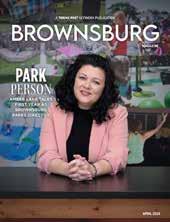
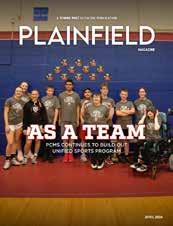







One East Main Street Brownsburg, IN 317-852-2268
hendrickscountybank.com

Today most major nationwide banks offer wealth advisory services to help their clients grow their money. Even local banks have gotten into this game more recently. For years, Hendricks County Bank and Trust Company has considered starting a wealth advisory division. They were just waiting for the right time and the right people to have in place. Everything came together in November 2023 when they hired Seth Cromer to head up the Wealth Advisors division.
“This is a strategic initiative that fits in well with our mission statement, which says, in part, that we’re here to promote economic prosperity and to improve the quality of life in the Hendricks County community,” says Jerry Orem, president. “Financial services are a natural offshoot to the banking products and services we offer our customers.”
Hendricks County Bank and Trust Company has clients who have been with them their entire life - perhaps 50, 60 or 70 years. As a result, strong relationships have been built over time. Hendricks County Bank has five branches. At each branch, any time a customer walks through the door,
they’re greeted, and more often than not by name. You don’t get that personal touch at many bigger banks.
“People would rather not go outside of the community they like and know for advice on what to do with their retirement savings,” says Cromer, a lifelong resident of Hendricks County.
While many larger entities might only be interested in working with individuals with a high net worth, at Hendricks County Bank, they offer the same products and services to customers with a high net worth and those with modest means.
“We work with people who maybe have a job change and a 401(k) to rollover, or perhaps they’re self-employed and need to start an IRA,” Orem says. “That’s the niche we fill that the larger brokerage houses probably overlook.”
Cromer, who over the next few years will be building out and growing Hendricks County Wealth Advisors, loves the diverse tapestry of his days. For instance, he
recently started out his day talking to a small-business owner who wanted to set up simple IRAs for his handful of employees. Cromer shared details on the new tax benefits and tax breaks for small-business owners who start such a plan. From there, he met a college student who was looking to set up an IRA for the internship he just completed, as well as his upcoming summer internship. Finally, he made a house call to an 80-year-old customer who didn’t want to go out in the bitter cold. “It benefits me as well; I always get good tea and coffee when I go to her house,” Cromer says with a smile.
The day demonstrates the full spectrum of the clientele Cromer works with, which exemplifies the purpose of a community bank.
“All of these clients are in completely different stages of life and different stages in their financial situations,” says Cromer, who enjoys learning about his clients’ interests and hobbies. “Relationship building is the best part of this process, as we focus on these differences and work together to develop a plan that best serves each situation.”

On April 23, 2022, Brian and Crystal Clark suffered a parent’s worst fear.
Their two children, Xander, 9, and Ziva, 8, were killed instantly in a freak accident no one could have seen coming.
“We were at our campground on a beautiful spring day,” Crystal said. “It was extremely windy but 70 degrees and the sun was shining. We went for a golf cart ride and found friends at our favorite fishing spot. They were taking turns taking fish off the hooks. Ziva would kiss the fish and throw it back in, and Xander was twirling a worm around his finger just before we left.”
After a short visit, the family of four got back into the golf cart with promises to return soon, but once they were traveling down the path, they heard a loud sound and couldn’t tell which direction it was coming from.
“It sounded like a plane was crashing into the woods,” Crystal said. “A tree came down, hit the F150 to the right of us, and then on top of our golf cart. We were in the front seat, and Xander and Ziva were in the back. The tree missed us by inches but struck the children directly and they were gone.”
Paramedics came, but shortly after, they confirmed what the Clarks already knew.
“This was a 30-foot-tall tree and it split from the trunk about two feet off the ground,” Brian said. “It’s something, as a parent, you wouldn’t ever think of. You can think of a thousand things you need to do to protect your children, but this doesn’t even pop into your mind.”
Despite their shock and pain, the couple set out to warn others about the dangers of damaged, dead and hollow trees.
They hope to save a life by making others aware of what could happen.
“You can’t just look at the tree and know if it’s dead or alive,” Brian said. “It’s not something you can see, but we can pay attention. Have your trees checked regularly by a professional. Most tree companies give free quotes.”
The couple have spoken with other parents who have experienced a similar loss, and though it’s a rare occurrence, they have others thinking.
It’s not uncommon for those who have heard their story to reach out, letting them know they’ve had their trees examined or removed.
The Clarks simply hope people are proactive.
Last spring, billboards in Indianapolis and surrounding areas featured Xander and Ziva, warning the public about the dangers of unmonitored trees.
Brian and Crystal also hang the same banner from their trailer while traveling around the state to various barbecue competitions. The banner is always noticed and always discussed.
“It’s a tragedy we live every day,” Crystal said. “We couldn’t save our own children, but maybe their legacy will save someone else. If we can do something that plants a little seed in someone’s mind, it’s more than what they thought about it before. We don’t want anyone else to feel this unimaginable pain.”

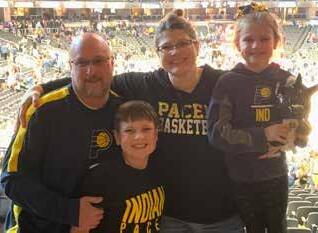

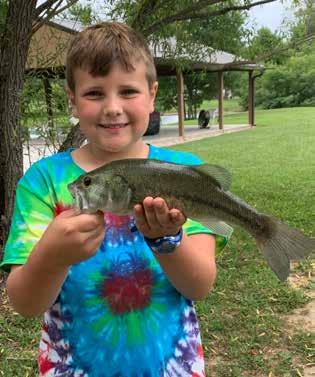
April is Alcohol Awareness Month, a time to raise awareness for alcohol abuse. Many families face difficulties when a loved one struggles with alcohol abuse. Supporting someone through this journey requires empathy, patience, and a multifaceted approach aimed at both the individual and their support system.
Alcohol abuse is a complex issue with multifaceted roots. It impacts not only the individual, but also their relationships, work and overall well-being. Recognizing the signs, which may include increased tolerance, mood swings and neglect of responsibilities, is the first step in addressing the problem.
Initiating open, nonjudgmental conversations can pave the way for support. Express your concerns calmly, emphasizing care and understanding. Listening actively and without interruption fosters trust and encourages your loved one to share their struggles.
Learning about alcohol abuse, its effects, and available treatments equips you to offer informed support. Understand that addiction is a complex disease, often requiring professional intervention.
Gently encourage your loved one to seek professional help. Offer to assist in finding resources, whether it’s counseling, therapy, support groups or an addiction treatment program. Highlighting the benefits of seeking help can alleviate the fear and stigma often associated with treatment.
Setting clear boundaries is crucial for both your well-being and that of your loved one. Enabling behaviors, such as covering up their actions or making excuses for them, can perpetuate the cycle of abuse. Express your support while maintaining boundaries that safeguard your own mental and emotional health.
Supporting someone with alcohol abuse can be emotionally taxing. Engage in self-care activities to recharge and maintain your
own well-being. Seek support from friends, family or professional counselors to navigate your own emotions and challenges.
Recovery from alcohol abuse is a journey with ups and downs. Stay committed to supporting your loved one through this process. Celebrate their milestones and remain a pillar of encouragement during setbacks.
Remind your loved one that recovery is possible. Share stories of individuals who have successfully overcome similar challenges. Instill hope and emphasize that seeking help is a courageous step towards a healthier, fulfilling life.
Remember, while you can offer support, the decision to seek help ultimately rests with your loved one. Encouragement and support are vital, but respecting their autonomy and readiness to change is equally important.



Nothing compares to the comfort of reclining furniture. Godby Home furnishings offers Central Indiana’s largest selection of motion furniture with all the top brand names like Southern Motion.
From sophisticated styles and designer fabrics, to “zero-gravity” and massage features, Southern Motion offers something for everyone made right here in the United States.

Come into Godby today and let
design team help you customize the perfect piece to fit your lifestyle or choose from one of the 1000s of items we have in stock.


Families who have one or more children with intellectual or physical disabilities know how difficult it is to find inclusive activities for their kids.
While there are several programs out there for those with special needs, there’s something unique about joining with classmates for a cause that elevates everyone involved.
Special Olympics created a program inspired by the idea that training together and playing together is the path to friendship and understanding.
Plainfield Community Middle School (PCMS) is on board and they’re currently in their fourth season of the Unified Sports program.
The idea behind Unified Sports is to join students with and without disabilities to compete on the same team. In some instances, students are paired in a buddy
system so everyone receives the support they need, and in others, tasks are more fluid and they simply play together.
Not only does it encourage students to support one another, but it also allows athletes with disabilities to lean on peer mentors when they have a question or feel unsure about what to do next. Hopefully, having their favorite sport in common, and the experience of accomplishing something together, strengthens the bonds among students of all abilities.
Nathan Ellis, PCMS assistant athletic director and seventh grade social studies teacher, has been there from the beginning.
“We started out with track and attended a meet at Brownsburg Middle School West pre-pandemic,” Ellis said. “Since then, we’ve added nine or 10 different schools to compete in track meets, and last year




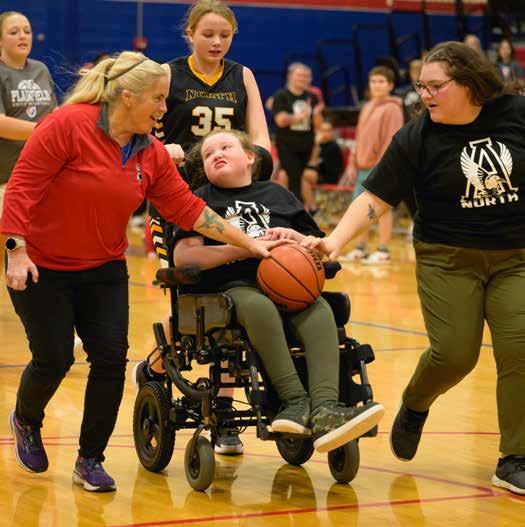








we also started offering basketball.”
That track meet with Brownsburg Middle School West was so fun for all involved, PCMS decided to create their own program, and so far it’s been a success.
It’ll take time to build to the program’s full potential, but Ellis is already seeing good signs.
In 2023 athletes in the Unified Sports program competed in two basketball games, and four are scheduled this year, including an away game at Franklin Central.
“It’s really about how many people are interested in participating and who we can compete against in our area,” Ellis said. “Right now there are well over 100 schools participating in unified track and field at the high school level, and probably 10 to 15 schools at the middle school level. For basketball, I’ve reached out to a few other schools and Avon Middle School North replied with interest, so we’ll get a chance to play them this season.”
According to the official Special Olympics website, the Unified Sports program is in more than 8,300 schools across the country, with the goal of reaching 10,000 by the end of 2024, with ESPN serving as the global sponsor. In addition, more than 19.5 million youths are taking part in the experience.
Ellis has seen the benefits firsthand and said his goal is to have a unified sport in every season: fall, winter and spring.
Not only do the athletes have a blast, but he’s also seen the entire school get behind the program and cheer on peers.
“It’s incredible to see the student body cheering for every shot,” Ellis said. “I think they’re louder than they are at traditional basketball games. We recently had an athlete hit a three pointer and the gym just erupted.”
The games are announced alongside all activities happening at PCMS, and it’s not unusual to feel the excitement or see a few fist bumps in the hallways.
“The athletes wear their jerseys on game day,” Ellis said. “You can hear the students talking about it throughout the day. It’s cool to see all the hype around it and I routinely have students ask how they can help or get involved. This program will continue to grow.”
Perhaps what makes the program so popular is the positive changes seen in every athlete. They’re building confidence, self-esteem and friendships along the way.
Ellis knows one student-athlete who sits silently in class, never saying a word, but blossoms on the court, most recently scoring 12 points in one game.
Others, like athlete Jas Roop Singh, have participated in both the basketball and track programs. Singh said he enjoys his teammates, having fun on the court, and making three-pointers.
Emma Righter, an eighth-grade student, also plays on the team. Students without disabilities are developing leadership skills and giving back to their peers in a unique way.
“My little sister has Down syndrome and I understand it,” Righter said. “It’s just fun being able to help other kids, and you’re a part of something way bigger than yourself. I think our classmates do a great job cheering us on, and it’s just a cool thing to be a part of.”
There’s an educational component too.
Righter may have a little more knowledge than others from experience with her sister, but for many, working with students who have special needs might allow for growth and understanding.
The staff working on the Unified Sports program at Special Olympics are counting on it.
forming for next semester and we’re already looking at offering flag football soon.”
In fact, the PCMS staff participates in several Special Olympic fundraisers throughout the year, including the annual Plane Pull and upcoming Polar Plunge challenge this spring.










“Any time you can work with someone slightly different than yourself, you gain a greater perspective and understanding,” Ellis said. “It’s even prompted other inclusive activities. We have a Best Buddies program
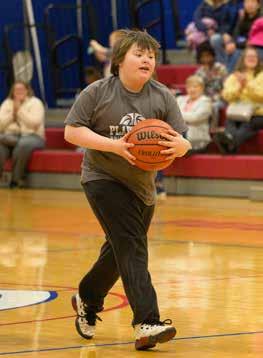
The school was recently recognized as a Champion Together in the Middle school by Special Olympics.
Schools who have distinguished themselves by providing inclusive activities and programs receive a Unified Champion Schools banner. Requirements include organizing at least one Unified Sports program, and fundraising a minimum of $750 for the organization to assist in sustaining and expanding inclusive programming.

Best of all, PCMS is inspiring students to grow in their understanding and awareness of those who may be different. For those who may have struggled to be included in the past, hopefully those days are over.
“We want all of our students to have the same opportunities,” Ellis said. “There are so many smiles at our practices and games. It’s just fun to see the students interacting and enjoying themselves.”




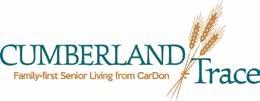
17.
 DARREN BOSTON
DARREN BOSTON




Three reasons why a mammogram is an important part of your preventive health



1 A mammogram can save your life. Early detection of breast cancer can increase a woman’s ve-year survival rate to 97%.
2



It doesn’t take much time. Mammograms are a quick procedure, only taking about 20 minutes.


3 Your risk of developing breast cancer increases as you age. The older you get, the more you are at risk of developing breast cancer. That’s why mammograms aren’t a one-and-done test.

Mammograms are vital to your health and longevity as a woman. Indiana University Health recommends routine screening mammography to improve the likelihood of detecting breast cancer early. If you have speci c questions about your level of risk for breast cancer, schedule an appointment with your primary care provider.